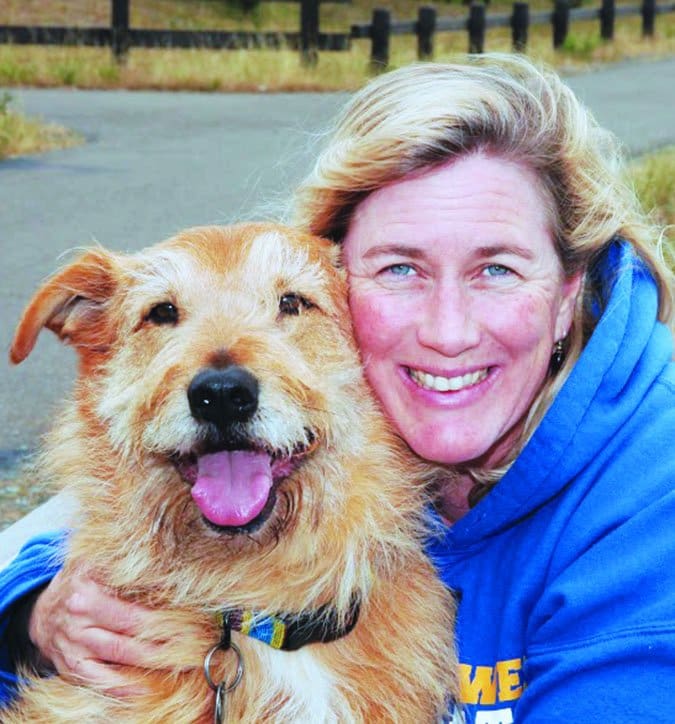My sister and I were having a tearful debate about what’s worse: Preparing oneself emotionally for the death of an old, beloved dog? Or sending puppies that you have raised out into the world for an uncertain future? Neither one of us won the debate; we just boo-hooed and laughed through our tears until we could go on with our day.

My sister and her husband have three dogs. Once upon a time, they had three senior dogs at once, and that was a sad time, watching all three decline in mental and physical function, and then dealing with their deaths fairly close together. Today, their dogs’ ages are staggered a bit more, with a three-year-old Jack Russell-mix, a four- or five-year-old Chihuahua-mix (one of my former fosters, actually), and then Bo, a fuzzy gray terrier-mix, about 30 pounds, who is about 15 or 16 years old.
Bo came to them as a golden-years foster dog about five years ago from a friend in crisis. He settled into their household so smoothly, it seems like he’s always been there. Today, though, it seems like he’s not going to be here much longer. He’s had a number of minor strokes lately, and after each one, he’s a little less sharp; his expression looks like he understands less and less of the language being spoken in his household. On the other hand, he still loves to eat, and his elimination habits are still good, so they are just sort of loving him as much as possible and letting him be for the time being. He’s never been my sister’s favorite dog in the house, but now that he’s declining, she’s getting quite emotional about all they have been through together in the past half-decade.
It’s not a competition, but I’m certain that my situation is sadder. Each time I take on a litter of puppies to foster for my local shelter, I say I’m not going to get attached – and it almost seems possible that I could maintain that reserve in the beginning, when the puppies are little poop and pee machines – when I’m exhausted from spending far too much of my day trying to push food into one end of puppies and cleaning up what’s coming out of the other end. Finally, though, they get the eating thing figured out and are able to go more than an hour without making a mess on the floor and they start developing personalities, and before I know it, I have a favorite and a second favorite and actually, come to think of it, every single one of them is a little genius. Darn it!
This week, they officially became up for adoption at the shelter – meaning, I’ve had to take them to the shelter and put them in those concrete runs in that loud building. If there is a dog who can look sadder than a Great Dane puppy, I don’t want to meet him or her; this has been hard. I bring them in with toys and treats, and I stay and play with them for a while. But at some point, I have to kiss them goodbye and wish them luck in finding a family during the day – and then the shelter staffers laugh at me (in a kindly way) as I weepily leave the building.
I can’t leave them there overnight; I just can’t!! So I go back each evening to pick them up and bring them “home” for the night. (That way, they can play outdoors with my adolescent dog and decompress from the stress of the shelter.) There are fewer pups to bring home each evening, and that’s a good thing, I know, I’m happy for them . . . but oh my goodness, it’s hard, too. Dog good-byes are the worst.





